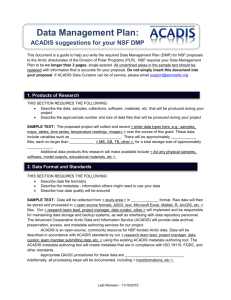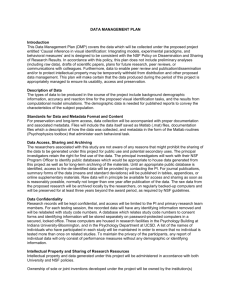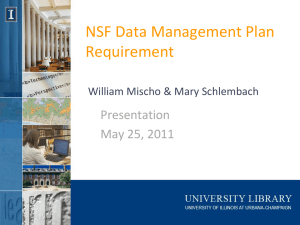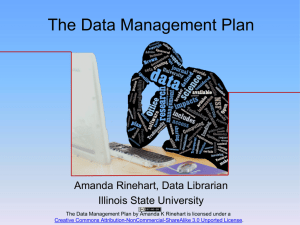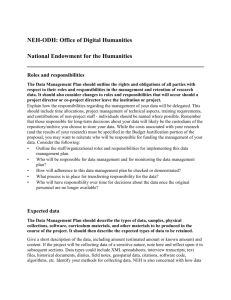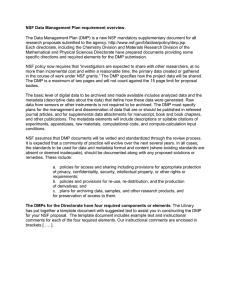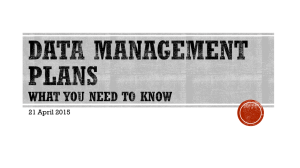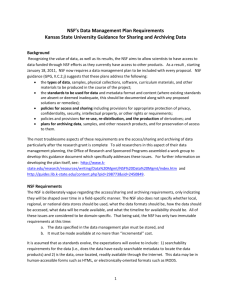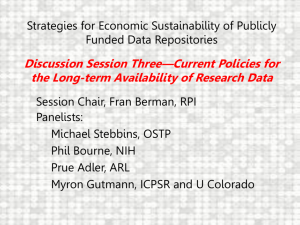NSF Data Management Plan Requirement Overview
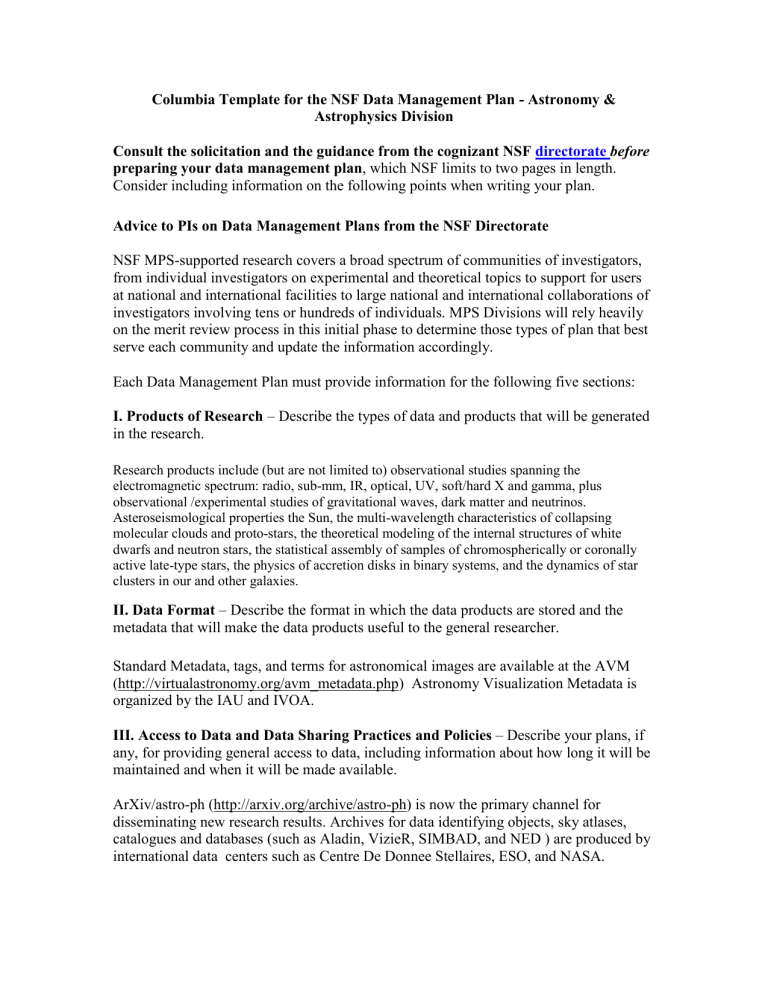
Columbia Template for the NSF Data Management Plan - Astronomy &
Astrophysics Division
Consult the solicitation and the guidance from the cognizant NSF directorate before preparing your data management plan , which NSF limits to two pages in length.
Consider including information on the following points when writing your plan.
Advice to PIs on Data Management Plans from the NSF Directorate
NSF MPS-supported research covers a broad spectrum of communities of investigators, from individual investigators on experimental and theoretical topics to support for users at national and international facilities to large national and international collaborations of investigators involving tens or hundreds of individuals. MPS Divisions will rely heavily on the merit review process in this initial phase to determine those types of plan that best serve each community and update the information accordingly.
Each Data Management Plan must provide information for the following five sections:
I. Products of Research – Describe the types of data and products that will be generated in the research.
Research products include (but are not limited to) observational studies spanning the electromagnetic spectrum: radio, sub-mm, IR, optical, UV, soft/hard X and gamma, plus observational /experimental studies of gravitational waves, dark matter and neutrinos.
Asteroseismological properties the Sun, the multi-wavelength characteristics of collapsing molecular clouds and proto-stars, the theoretical modeling of the internal structures of white dwarfs and neutron stars, the statistical assembly of samples of chromospherically or coronally active late-type stars, the physics of accretion disks in binary systems, and the dynamics of star clusters in our and other galaxies.
II. Data Format – Describe the format in which the data products are stored and the metadata that will make the data products useful to the general researcher.
Standard Metadata, tags, and terms for astronomical images are available at the AVM
(http://virtualastronomy.org/avm_metadata.php) Astronomy Visualization Metadata is organized by the IAU and IVOA.
III. Access to Data and Data Sharing Practices and Policies
– Describe your plans, if any, for providing general access to data, including information about how long it will be maintained and when it will be made available.
ArXiv/astro-ph (http://arxiv.org/archive/astro-ph) is now the primary channel for disseminating new research results. Archives for data identifying objects, sky atlases, catalogues and databases (such as Aladin, VizieR, SIMBAD, and NED ) are produced by international data centers such as Centre De Donnee Stellaires, ESO, and NASA.
IV. Policies for Re-Use, Re-Distribution, and Production of Derivatives - Describe your policies regarding the use of data provided via general access or sharing
It is expected that data will be published in journal articles and/or deposited in the appropriate astronomical archives . Specifiy where your data will be deposited and the terms of access for members of the astronomical community and/or the public. Supply a web link and PI contact information for data that has not been published.
V. Archiving of Data – Describe whether and how data will be archived and how preservation of access will be handled. . If the data will be archived by a third party (e.g., national observatory or journal), please refer to their preservation plans, if available.
Columbia’s
Data Retention Policy : "Research data must be archived for a minimum of three years after the final project close-out, with original data retained wherever possible.
Some sponsors require a longer period of retention."
Astronomical Data Centers have developed preservation and format refreshing protocols for deposited data. This information can be obtained from the individual centers.
Laboratories retaining data should explicate their plans for preservation. Observational data should be available indefinitely. If the historical data is used, specify the source of the data.
Adapted from work made available under the terms of the Creative Commons
Attribution-ShareAlike 3.0 license, (c) 2012 by the Rector and Visitors of the University of Virginia.
